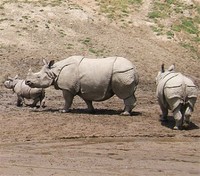Facts about Rhinoceros

The black rhinoceros, Diceros bicornis, also colloquially black rhino, is native to the eastern and central areas of Africa, including Kenya, Tanzania, Cameroon, South Africa, Namibia, and Zimbabwe.

So the rhino with the wide mouth ended up being called the white rhino and the one with the narrow pointed mouth was called the black rhinoceros.

Only the white rhinoceros, which is listed as near-threatened, is no longer endangered.

The World Conservation Union (IUCN) announced on July 7, 2006, that one of the four subspecies, the West African Black Rhinoceros (Diceros bicornis longipes), has been tentatively declared as extinct.

The Sumatran rhinoceros, Dicerorhinus sumatrensis, is the smallest extant rhinoceros species, as well as the one with the most fur.

The African and the Asian rhinoceros have some distinct characteristics.

The word "rhinoceros" is derived from the Greek words rhino, meaning nose, and keras, meaning horn; hence "horn-nosed."
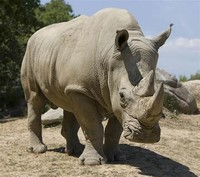
The white rhinoceros' genus, Ceratotherium, appropriately means "horned beast."

The Afrikaans word "wyd" (derived from the Dutch word "wijd"), which means "wide," referred to the width of the rhinoceros' mouth.

Rhinoceros horns are used in traditional Asian medicine and for dagger handles in Yemen and Oman.

The white rhinoceros, or square-lipped rhinoceros (Ceratotherium simum), is one of the five species of rhinoceros that still exist.
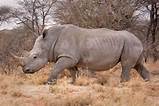
An alternative common name for the white rhinoceros, more accurate but rarely used, is the square-lipped rhinoceros.
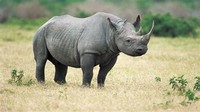
Several rhinoceros species became extinct within geologically recent times, notably the Giant Unicorn and the Woolly Rhinoceros in Eurasia.

Formerly, the Sumatran rhinoceros extended in a continuous distribution as far north as Myanmar and eastern India but poaching has made it extinct in Thailand and Vietnam.

Similar to the white rhinoceros, black rhinoceros cows go into heat during the African wet season and therefore give birth to their calves in late summer.

Rhinoceros horns, unlike those of other horned mammals, consist only of keratin, fibrous structural proteins, and lacks a bony core, such as bovine horns.

The one-horned rhinoceros is a solitary animal; however they tend to congregate in bathing pools and feeding areas.

The genus contains two species: The Indian rhinoceros (Rhinoceros unicornis) and the Javan rhinoceros (Rhinoceros sondaicus).

The extinct woolly rhinoceros of northern Europe and Asia was also a member of this tribe.

The critically endangered Sumatran rhinoceros is the only surviving representative of the most primitive group, the Dicerorhinini, which emerged in the Miocene (about 20 million years ago) (Rabinowitz 1995).

Rhinoceros-like animals first appeared in the Eocene as rather slender animals, and by the late Miocene there were many species.

Despite adding to the human fascination with nature, in the twentieth century the rhinoceros has been hunted to the brink of extinction, often sought by hunters only for their horn.

The name of the species was chosen to distinguish it from the white rhinoceros (Ceratotherium simum).

One repeated fallacy is that rhinoceros horn in powdered form is used as an aphrodisiac in Traditional Chinese Medicine (TCM).

The Sumatran rhinoceros is the last surviving species in the same group as the extinct woolly rhinoceros.
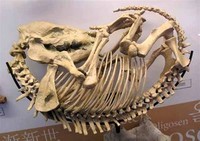
The largest known perissodactyl in the fossil record, an Asian rhinoceros called Paraceratherium, reached 11,000 kg (12 tons), more than twice the weight of an elephant.

The Javan rhinoceros is one of the most endangered large mammals in the world with only 60 individuals surviving, in only two known locations: Java (Indonesia) and Vietnam.
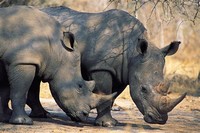
The word "rhinoceros" is derived from the Greek words rhino, meaning nose, and keras, meaning horn; hence "horn-nosed."

The rhinoceros (plural rhinoceros, rhinoceroses, or rhinoceri) or rhino is any of the odd-toed ungulates (order Perissodactyla) comprising the biological family Rhinocerotidae.

After the elephant, it is probably the most massive remaining land animal in the world, along with the Indian rhinoceros, which is of comparable size.


